
All About Cockatoos

Cockatoos
Cockatoos are native to Australia, New Zealand and South Pacific islands.
Most free-ranging species are considered threatened or endangered, and
efforts to protect these birds have resulted in a ban on importation for pet
purposes in the United States. High quality companion birds are available
from breeders. The “white” species (eg, Umbrella, Sulphur-crested, Citron)
are in high demand because they are such good quality companion birds.
The personalities of cockatoos range from the “reserved” demeanor of the
Moluccan to the comical and playful Corella. All are affectionate and highly
intelligent birds that can be easily house-trained. Cockatoos produce
abundant powderdown (powder from their feathers) that may cause human
upper respiratory allergic reactions in some individuals. An ionizer or similar
air-filtration unit may diminish the degree of circulating powderdown in a
room. Vital Statistics Body length: 12-28 in Body weight: 300-1100 g Age of
sexual maturity: Small = 1-2 yr Medium = 3-4 yr Large = 5-6 yr Average
life span: 6-10 yr Maximum life span: 80 yr
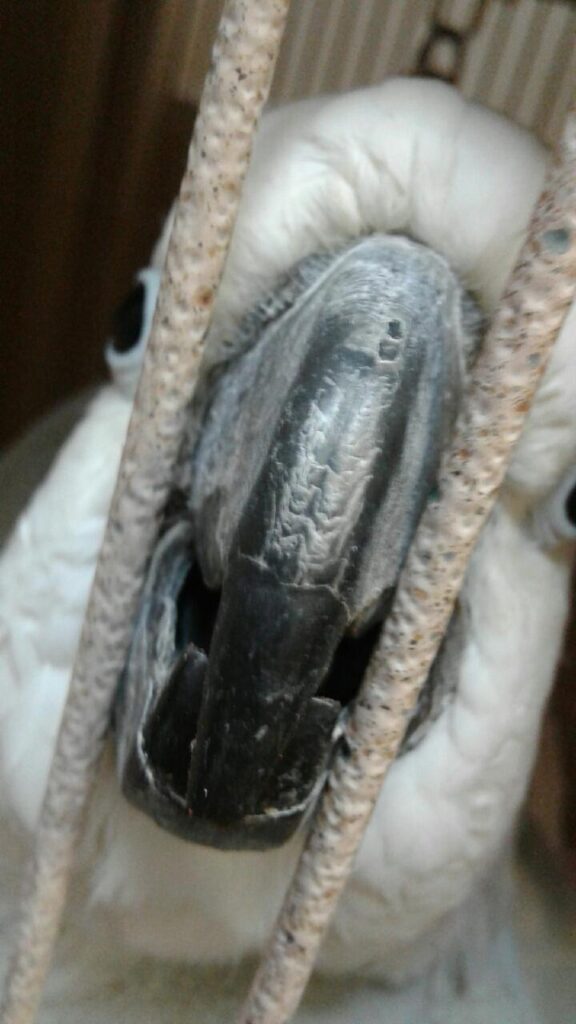
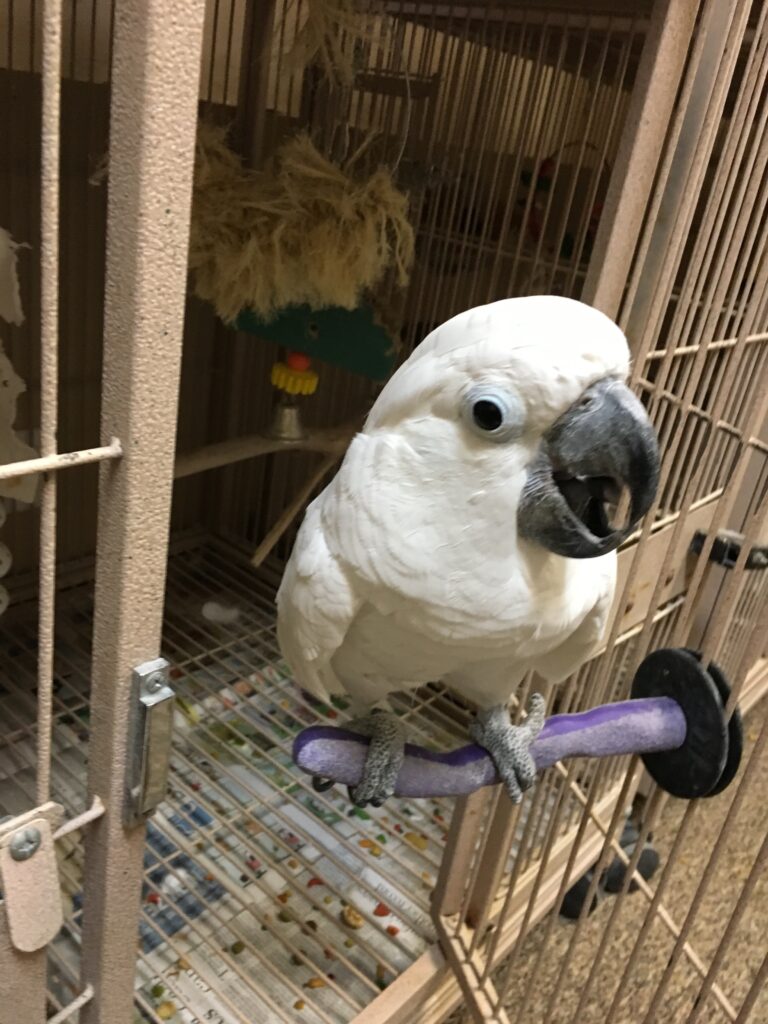
What to Expect from Your Cockatoo
Cockatoos are appreciated as companion birds because they enjoy
“cuddling.” Cockatoos are like small children – they can be charming and
may try to “steal the show.” Care must be taken to avoid spoiling these
birds. They require so much attention that they can be noisy and destructive
if improperly socialized. Imprinted cockatoos may become excessively
possessive of their owners, leading to aggression toward others,
unpredictability and other vices such as feather picking. Because of these
problems cockatoos are not recommended as a first bird or to people who
spoil their pets. Cockatoos have some capacity to mimic but their voice is
not as clear as other parrots.
What Do Cockatoos Do All Day?
Most cockatoos are playful and easily amused with simple toys. Because
they love to chew, any toys must be free of toxic metals, hooks, sharp
objects or small, easily consumed components. Providing chew toys or
fresh-cut branches from nontoxic, pesticide-free trees may prevent some
cockatoos from destroying their perches as quickly. Check with your
veterinarian for recommendations on locally available safe trees.

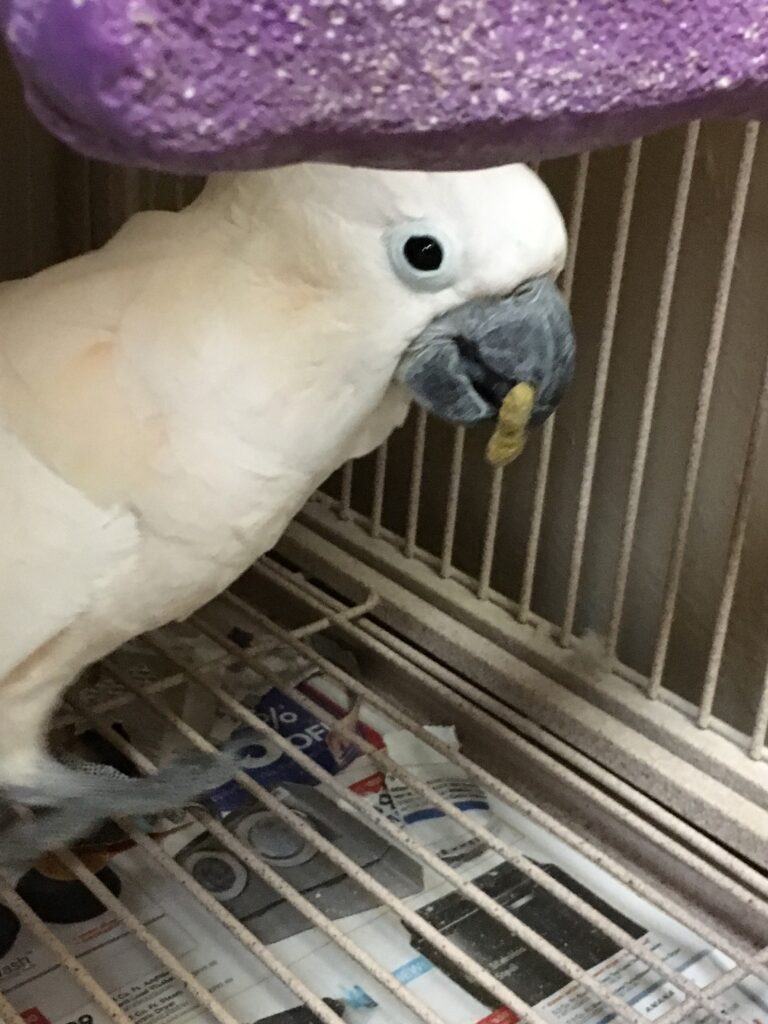
Is Your Cockatoo a Male or a Female?
In most white cockatoos species, the gender can be determined by the color of the iris: those of adult males are black and adult females are reddish brown. However, this does not hold completely true in all individuals; therefore, endoscopy or laboratory methods may be desired to confirm the gender in breeding facilities. Males are known to occasionally brutalize or kill
What Your Vet Looks For in a Healthy Cockatoo
Dry, open nares
Clear, bright eyes (no discharge)
Smooth, bright feathers without color breaks, transparency or ragged edges
Smooth beak
Alert, erect posture
Body free of lumps and bumps
Even, reptilian pattern on the feet, and nails of appropriate length |


Are Cockatoos Tame?
Young, hand-raised cockatoos adapt readily to new surroundings and
handling procedures. They should be exposed early in life to novel situations
(car travel, hospital visits, multiple visitors in the household, other
household pets) so that they are well adjusted to these events. Discipline,
leadership, patience, hooding (covering the head), a sense of ritual and the
offering of rewards may be necessary to modify behavior problems relating
to screaming in an effort to demand the presence of a family member.
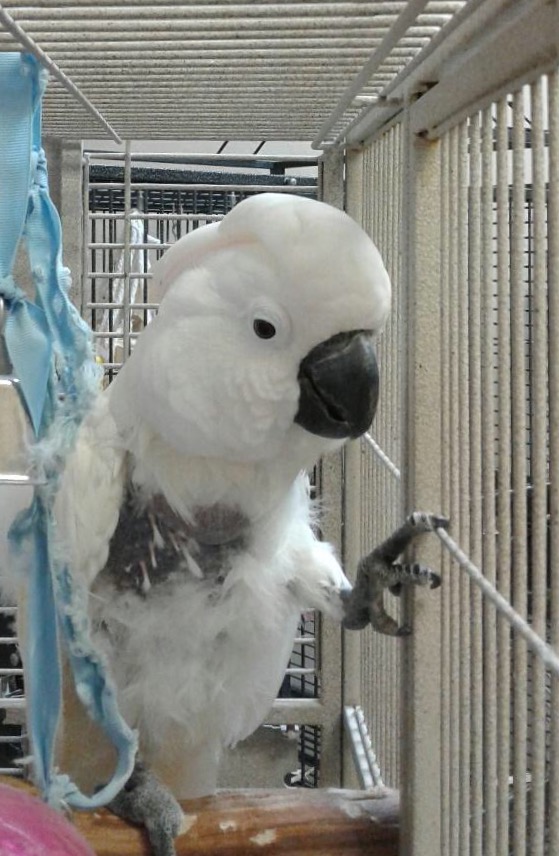
How to Identify Your Bird
Two methods used to permanently mark companion birds for identification purposes are tattoos and microchips (both are injected under the skin). Individually number leg bands are not reliable for identification. Every bird has a unique scale pattern on the feet. Photographs of the feet (updated periodically as the bird ages) can be maintained in the bird’s record to confirm its identity and to prevent fraud that can occur with other techniques.
Housing for your Cockatoo should:
be as large as possible. be clean, secure, safe and easy to service. be constructed of durable, nontoxic material (avoid zinc). contain variablesized perches made of clean, nontoxic, pesticide-free tree branches. have food and water containers placed at opposite ends of the enclosure. avoid having perches located directly over food containers. contain toys and accessories that are moved around occasionally to prevent boredom and aggression. offer occasional opportunity
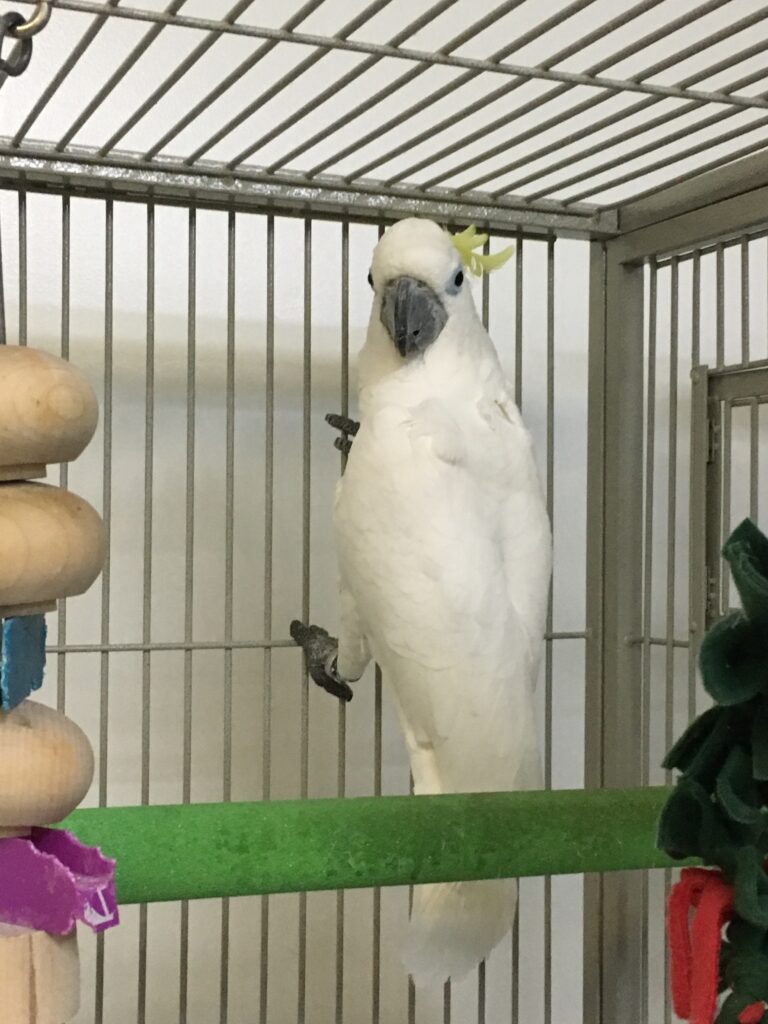
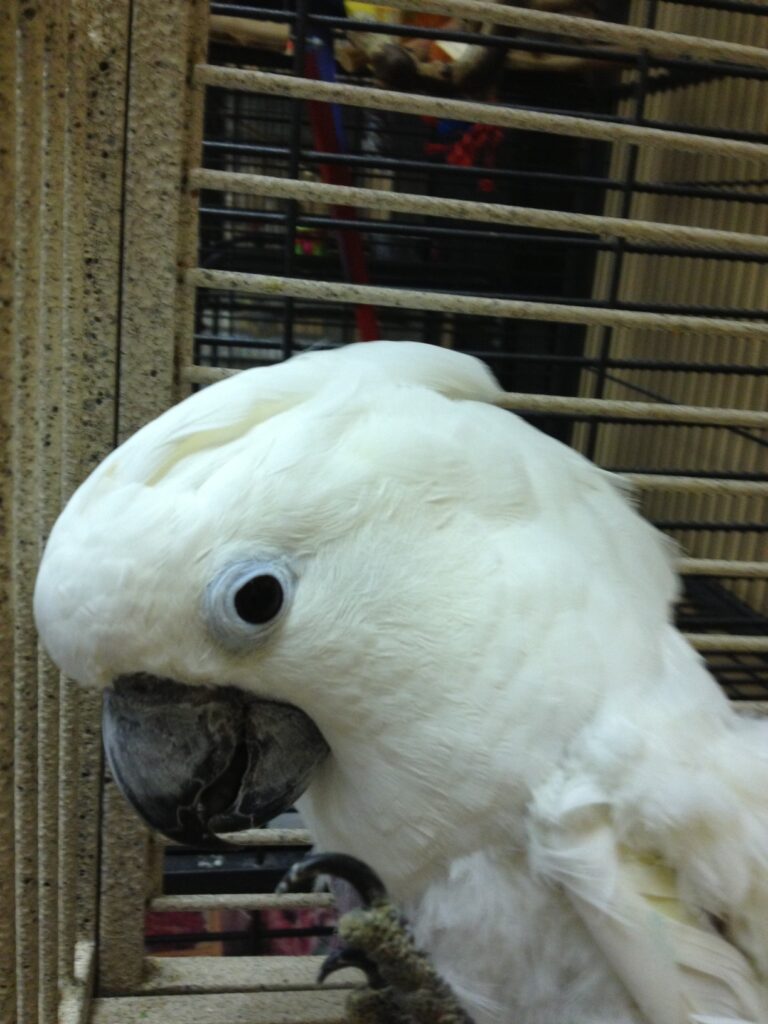
Cockatoos are very curious and will investigate anything new in their environment. That is why it is important to prevent their access to:
Hot cooking oil Teflon®-coated items (overheated) leg chains sandpapercovered
perches tobacco and cigarette smoke chocolate, avocado, salt,
alcohol toxic houseplants pesticides toxic fumes easily dismantled toysdogs,
cats and young children cedar, redwood and pressure-treated wood
shavings sources of lead or zinc (metal items like bells and chains) Nylon or
other synthetic rope or toys.
Most Common Diseases in Cockatoos
Feather picking, self mutilation Foot Baldness and sores Obesity Lipomas
Psittacine beak and feather disease virus Metabolic bone disease (juveniles)
Upper respiratory disease Anti-social behavior, esp. family member and
mate aggression Fungal infections Liver disease Parasites Cloacal prolapse
Many common disease conditions in cockatoos are the result of malnutrition.
Visiting your avian veterinarian for routine health checks will help prevent
many diseases and support you in having a long, satisfying relationship with
your cockatoo.
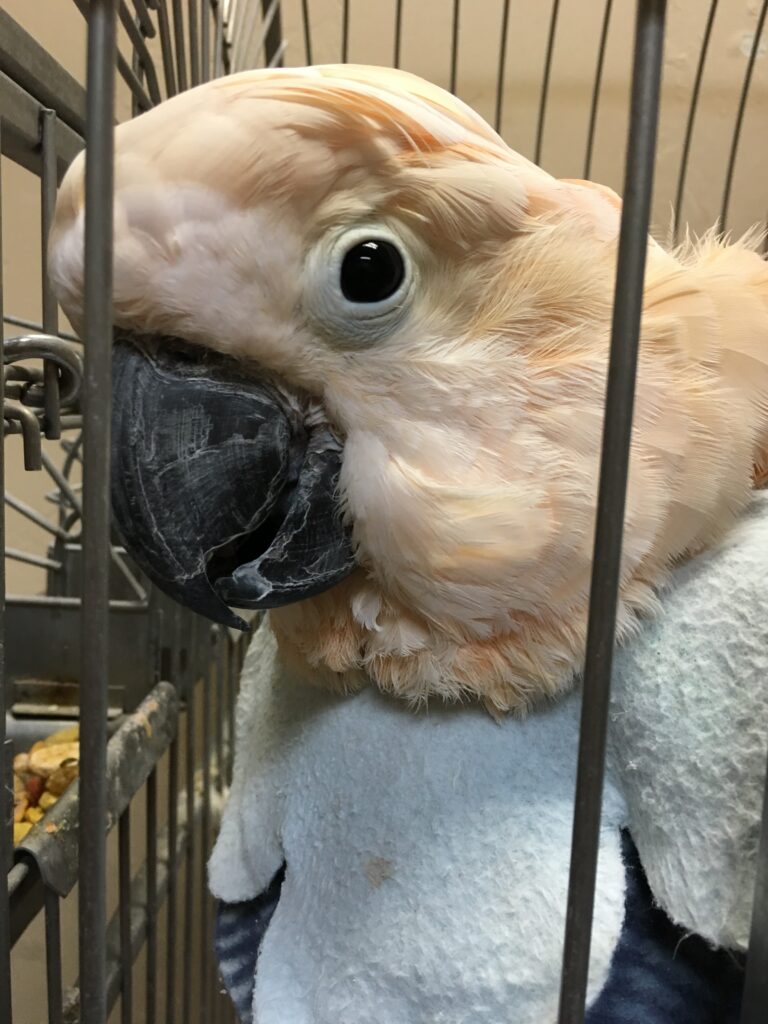

How to Keep Your Cockatoo Healthy, Happy and Safe!
Give LOTS of leadership training. Feed a fresh, high quality, toxin-free,
formulated diet, such as Harrison’s Course Grind Formulas with daily
supplementation of chopped vegetables and fruit according to the
instructions on the back of the bag. Grit is probably not necessary with
modern captive diets. Provide clean, fresh uncontaminated water (try using
water bottles). Remove and replace food and water containers twice daily to
maximize activity in a healthy bird. Provide an occasional opportunity for
bath, shower, or misting (at least weekly). Avoid spraying house with insecticides
[save_as_pdf_pdfcrowd]

